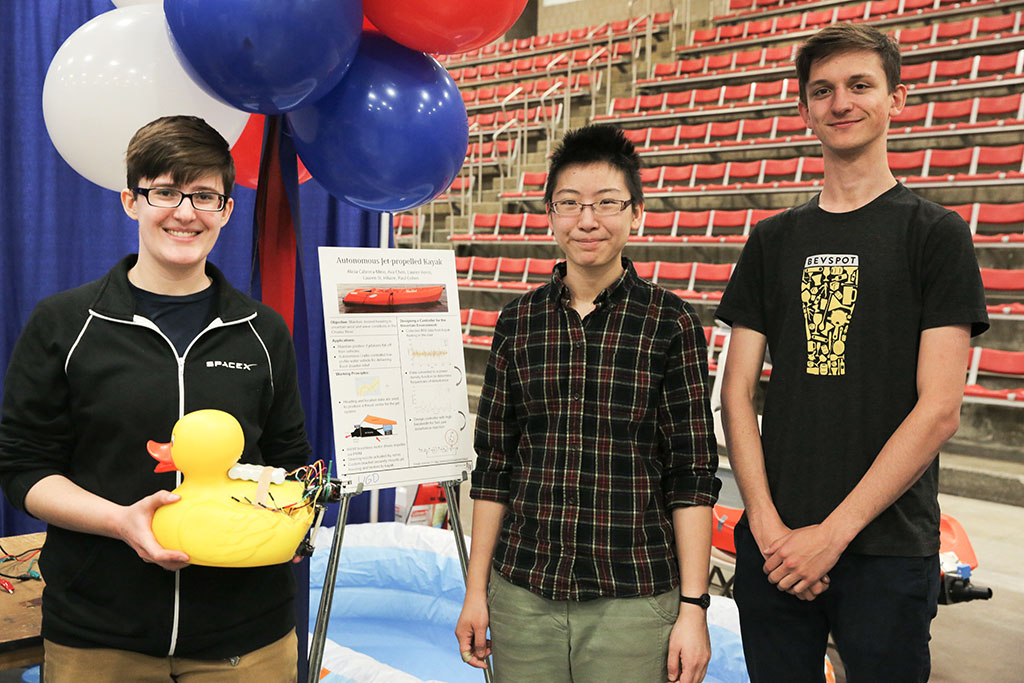De Florez Competition Winners Split $20K in Prize Money
With an impressive array of some of the best gadget and product developments mechanical engineering students have to offer, this year’s de Florez Competition pitted 25 applicants against each other to compete for a total of $20,000 in prize money. Entrants do their best to pitch the gizmos and products they’ve designed to a team of judges, who look at each entry’s level of creativity, innovation, practical application, scientific basis, and design skill. The purpose of the competition is to give students a chance to strut their skills and gain school-wide recognition for their ideas and prototypes.
This year’s winners in the category of Graduate Design were: Tyler Wortman, for Tissue Characterization for Skin Cancer Detection and Mapping; tied for second place were Alexandre Girard, for Lightweight Robotic Arms Using Dual-Speed Actuators, and Sahil Shah for Clutchless Dual-Shift Hybrid Transmission Architecture for Performance Applications; and tied for third place were Mark Jeunnette for High-Speed Multispectral Camera Array and Peter Chamberlain for the Automated Walker. In the category of Graduate Science, Katie Olesnavage won first place for her Development of a Novel Optimization Objective for Passive Prosthetic Feet. Jerry Wang tied for second place with Nanofluidic Adventures in Extreme Confinement along with Rachel Kurchin for Next-Generation Photovoltaics through Advanced Probabilistic Modeling. Pulkit Shamshery won third place for A Low-Activation Pressure Online Pressure Compensating Drop Emitter.
In the Undergraduate Design category, Benjamin Katz won first place for Cheap Actuators for Dynamic Robots; Matthew Cavuto won second place for Low-Cost Transfemoral Rotator for Use in the Developing World; and Samuel Resnick and Jacob Rothman tied for third place for Curved Scissor Truss and ProForm Power Rack, respectively. In the Undergraduate Science category, Teddy Ort won first place for A Robotic Helping Hand that Utilizes Visual Feedback to Optimize Human Robot Interaction in Soldering Applications.

